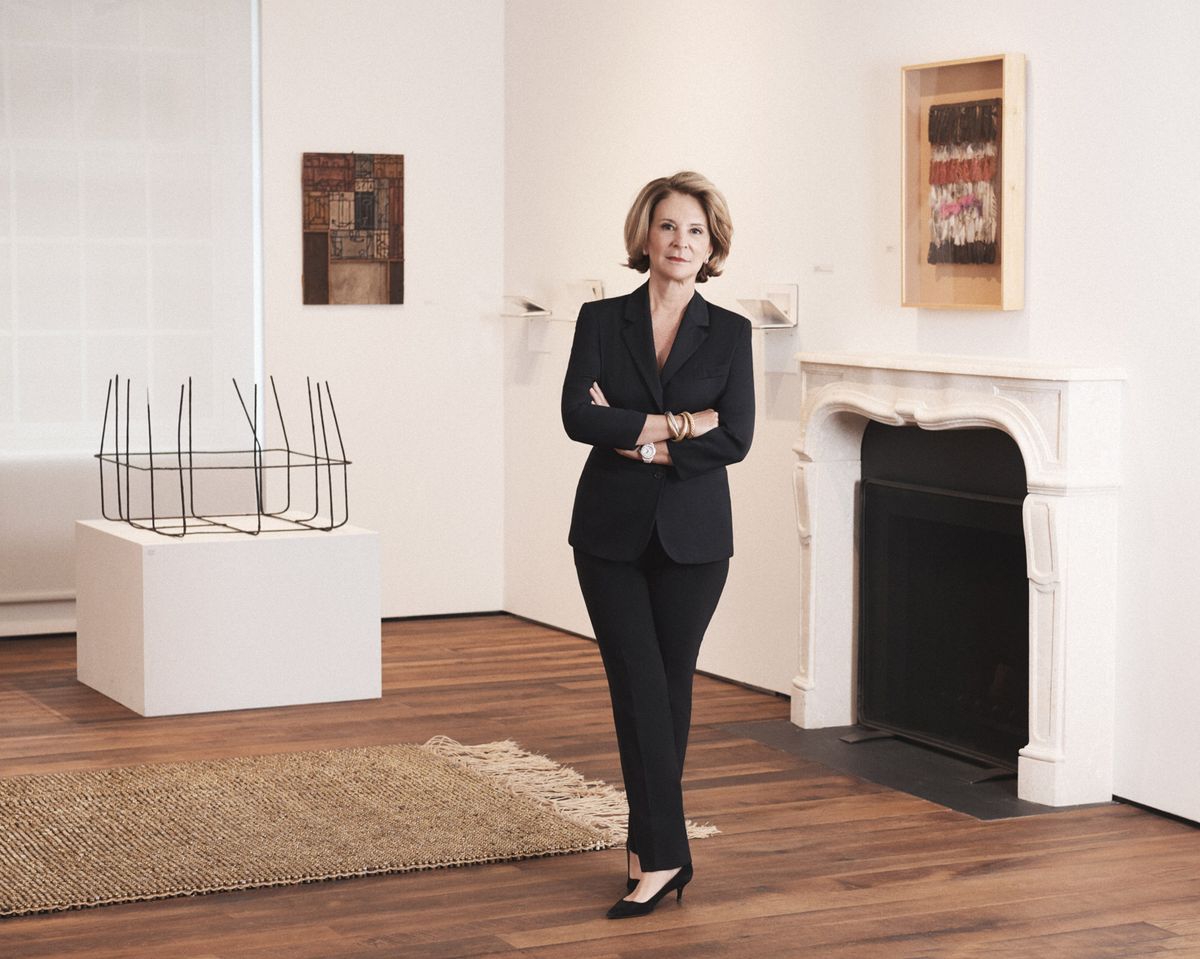New York-born Estrellita B. Brodsky’s parents hail from Venezuela and Uruguay. Such heritage, combined with regular family trips to Venezuela, instilled in her a love of Latin American art. The curator, collector and philanthropist has endowed curatorial positions for Latin American art in London at Tate Modern and at New York’s Metropolitan Museum of Art and Museum of Modern Art. She also founded New York’s Another Space, a programme and gallery (by appointment only) dedicated to broadening awareness of art from Latin America. Its current exhibition Comfortably Numb explores the history and cultural impact of narcotics (until 30 March 2019).
The Art Newspaper: What was the first work you bought?
Estrellita B. Brodsky: A 1944 Picasso portrait of a woman’s head entitled Tête. What I like is the way in which he suggests a woman’s features of eyes, nose and lips, drawn on to the form of a mandolin.
What is your most recent buy?
Decoracion de Interiores (1981) by the Colombian artist Beatriz González. It is a silkscreened curtain on fabric work that is currently being exhibited in the Comfortably Numb show. It depicts the then president of Colombia Turbay Ayala and was González’s first explicitly political work.
I really do not know about the financial value of the works
What is your preferred way of buying art?
I have bought through dealers and at auction, since many of the artists I collect live outside the US. I have often learned about their work through my academic studies, as well as at biennials and exhibitions.
What is the most valuable piece in your collection?
I really do not know about the financial value of the works, since I have tended to purchase works by artists before they reach the height of their commercial success.
If money was no object, what would be your dream purchase?
A Leonardo da Vinci drawing. I love the physical quality of drawings and direct contact of the artist’s hand.
Which work do you regret not buying when you had the chance?
One of Lygia Clark’s constructions from the 1950s. A dealer in Brazil showed them to me and I was so caught up on their condition that I did not purchase it and wish I had.
If your house was on fire, which work would you save?
This is an interesting question because it resonates with the recent fires in California and the one that wiped out Brazil’s National Museum. The work I would take would be my first purchase, the Picasso, for its history in my life and home, and all that it represents.
Which of all the works in your collection requires the most maintenance?
A 1975 performance piece by the Argentinian artist Marta MinujÍn called Frac-asado. As part of her University of Failure (Fracaso) performance, Marta charred a man’s dress coat. It is quite fragile and is on display in my living room atop the burnt charcoal base.
What is the most surprising place you have displayed a work?
Another Space has commissioned two performances that took place on the streets of New York. In 2016, we reconstructed Arte agrícola en acción—Toronjas by Marta Minujín, a work first presented in Mexico City in 1977. Then this year we commissioned Carguen con sus muertos by the Guatemalan performance artist Regina José Galindo, in which a procession carried the artist through downtown Manhattan in a body bag.
Which artists, dead or alive, would you invite to your dream dinner party?
Fun idea! Picasso, Frida Kahlo, Diego Rivera, Yves Klein, Joaquín Torres-Garcia, Lygia Clark and Remedios Varo.
What’s the best collecting advice you have been given?
Never regret, which I guess breaks with my earlier answer because you always do...


